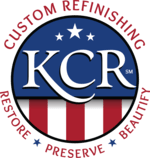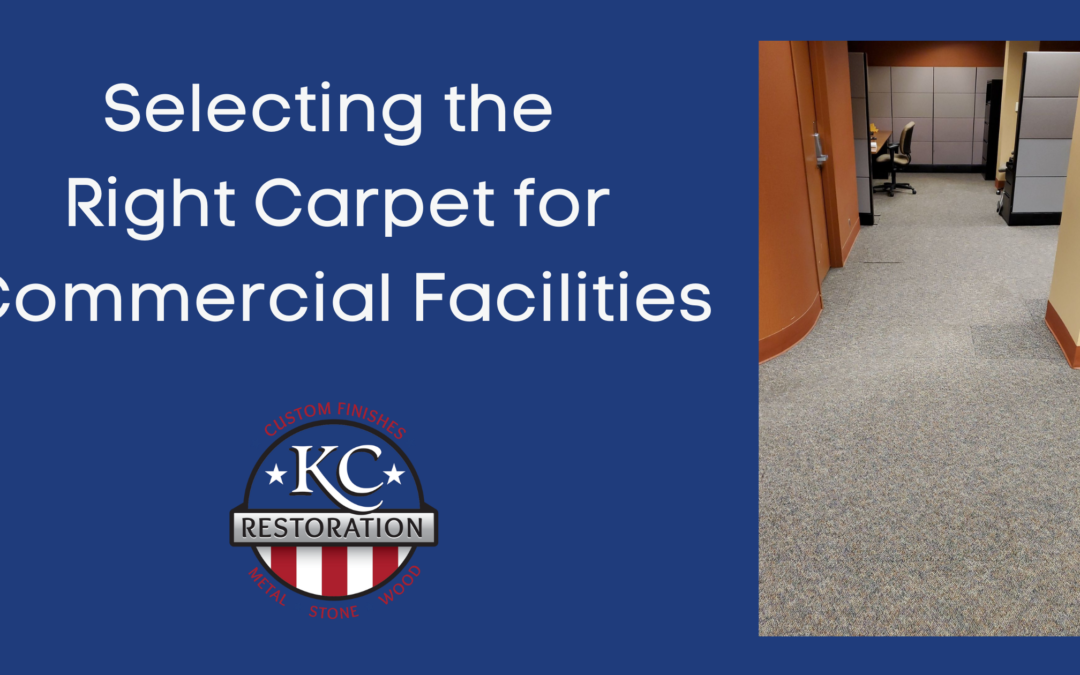When a commercial space needs new carpet, be sure to take into consideration several factors when making a selection. There are many options available, but these tips may assist you when it comes to color, fibers, installation, maintenance and more!
Color selection: Color options are highly diverse and can be chosen to provide a variety of stimulating or soothing effects.
Americans with Disabilities Act: The Americans with Disabilities Act requires carpet to have a pile height of a half-inch or less, as measured from the bottom of the tuft.
Carpet construction: The look of a carpet is determined by its construction, which may be level loop, multi-level loop, cut pile, or combinations of cut and loop pile. In corridors, and lobbies, loop piles tend to retain their appearance and resiliency and generally provide a better surface for rolling traffic, especially when the carpet has a low, dense construction. Cut pile or cut and loop pile carpet are both good choices for administrative areas.
Fiber: Nylon is by far the most prevalent fiber in use. It is excellent in wearability, abrasion resistance, is easily cleaned, and can be stain resistant. Olefin is used where resistance to sunlight fading and chemicals is more important than durability. Triexta is a new fiber category developed by DuPont. Wool is a natural staple fiber, is durable, resilient, and self-extinguishing when burned. Yarns can be either bulk continuous filament (BCF) or staple. Staple yarns are short fibers which may fuzz or lose fiber more than BCF.
Static electricity considerations: Carpet can be specified to meet criteria for the static electricity tolerances of highly sensitive electronic areas, such as computer rooms.
Microbiological considerations: Antimicrobial treatments considered helpful in reducing the propagation and spread of microorganisms have been used in carpet since 1980. Antimicrobial treatment benefits a commercial facility by providing insurance for when spots and spills cannot be immediately cleaned; however, it does not eliminate the need for a regular cleaning and maintenance plan.
Indoor air quality: Even though carpet emits the fewest VOCs of any floor covering, CRI developed its Green Label Plus programs to test and certify carpet, carpet cushion, and adhesives that emit the lowest amount of VOCs. Carpet has fewer emissions than other renovation and construction products, such as paint, wallboard, wall coverings, and cleaning materials. Furthermore, those low emissions clear within 48 to 72 hours, and more quickly with good ventilation. To ensure the best indoor environment in your facility, specify Green Label Plus products for your facility.
Installation: It is important to include requirements that dictate installation procedures, such as how the carpet will be installed, cushion type and weight, and delivery and installation schedules. When installing carpet, always adhere to industry standards as published in the CRI 104/105 Carpet Installation Standards. Remember, these are general standards and manufacturers will have more specific recommendations.
Maintenance: A consistent and thorough maintenance plan – plus a plan to address unusual spills – is crucial. Proper and regular maintenance of carpet will prolong its life and appearance. The carpet maintenance plan should follow the carpet manufacturer’s recommendations for cleaning methods, include the use of Seal of Approval-certified products, and utilize CRI recommendations for commercial cleaning and maintenance.
KC Restoration can provide a custom carpet care and maintenance program for most facilities and uses CRI approved equipment and materials. Contact us today for more information!

